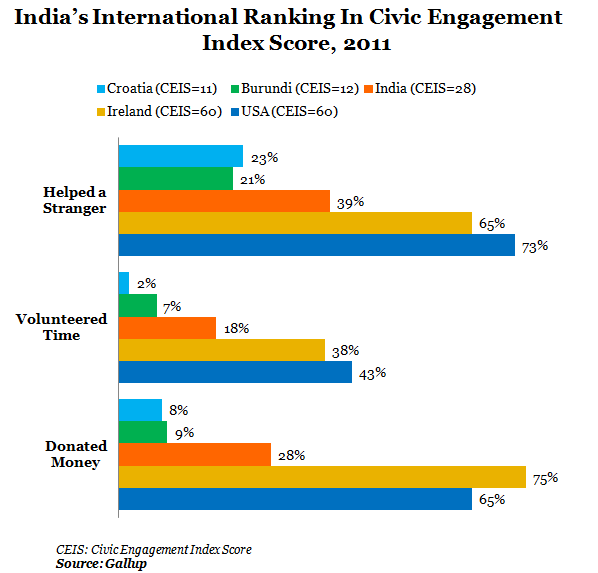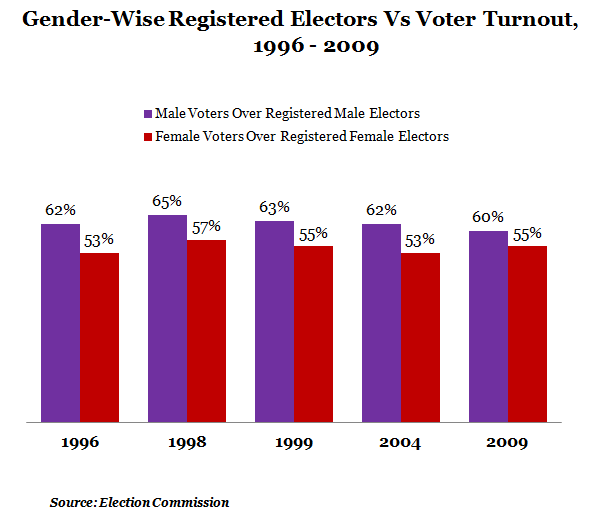The Statistical Guide To India, A Flawed Democracy
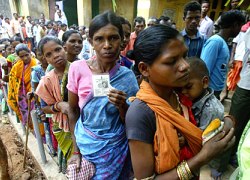 “The government you elect is government you deserve,” said Thomas Jefferson. Put another way, democracy is a form of government where the people are all powerful. They choose their rulers who can be periodically changed and thus form the essence of a democracy.
“The government you elect is government you deserve,” said Thomas Jefferson. Put another way, democracy is a form of government where the people are all powerful. They choose their rulers who can be periodically changed and thus form the essence of a democracy.
That said, how do Indians perform as citizens? Quite poorly, it appears from two interesting studies which try to put numbers to the phenomenon.
The Economist Intelligence Unit* (EIU) developed a Democracy Index in 2006 which comes out with an annual report on the state of democratization in the world. It is a comparative study of 165 countries. There are five categories that this index takes into account, namely - electoral process and pluralism, functioning of government, political participation, political culture and civil liberties. The scoring for each is on 10.
The overall score is an average of the scores in all the five categories. Ranks within the Democracy Index are determined by the overall score. Higher the score, higher is the rank in the index. According to their scores countries are grouped as Full Democracies, Flawed Democracies, Hybrid Regimes or Authoritarian Regimes in decreasing order of level of democratization.
India repeatedly scores low on two parameters- Political participation and political culture. And this is what brings India into the category of flawed democracies. Flawed Democracies are the ones with a score of 6-7.9. Qualitatively, most countries grouped as flawed democracies have considerable drawbacks in some or the other aspect of democracy. In the 2012 Democracy Index, 54 countries were listed as flawed democracies.
Figure 1
Source: The Economist Intelligence Unit
A low score in political participation and political culture shows that democratization in India is faulty because of people’s low allegiance and their perception of politics. Political participation entails people’s involvement in politics which can be in the form of voting, party memberships or mass mobilisations.
The values or attitudes that people have towards politics outline the political culture. Although India’s rank has been improving by one point each year in the past three years, there is no significant improvement in the overall scores. The years 2011 and 2012 saw some of the largest protests in India, yet their impact on democratization was very low.
Low participation on the part of Indians can also be seen in surveys done by other agencies-
Figure 2
Research consulting company Gallup came up with a Civic Engagement Index in 2011. The Gallup report is titled Civic Engagement Highest in Developed Countries. The three indicators used to measure civic engagement are money donated, time volunteered and helping a stranger. The civic engagement index underscores the social involvement of people.
There is a strong correlation between development, democracy and civic engagement. India’s score in the Civic Engagement Index 28 is significantly lower than the highest scoring countries. Comparably, countries similar to India such as the BRICS are very close on the scores.
Figure 3
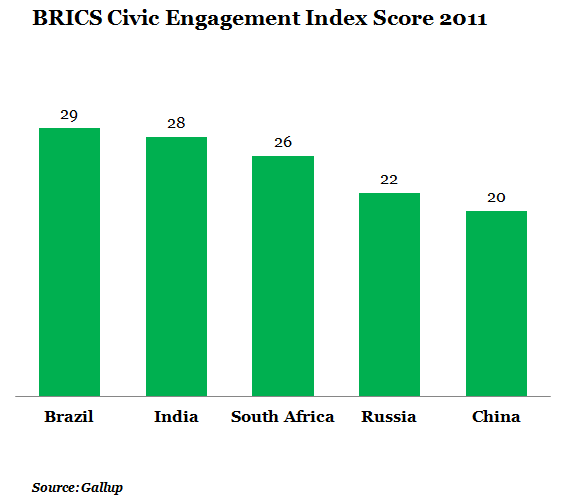
Civic Engagement Scores score speak of strong community ties within a nation. Stronger ties and greater involvement strengthen democracy. Not surprisingly, countries that top the charts on the Civic Engagement Index are also listed on the top of the Democracy Index. Higher democratization ensures better governance. Higher civic engagement is hence a cause for higher rate of development.
Another determinant of civic participation is voting. Countries that top the Democracy Index such as Norway and Sweden, have a voter turnout of 76 and 84%. UK has a parliamentary election voter turnout of 65%. USA and France have had a voter turnout of 53% and 80% respectively in recent Presidential elections.
The Election Commission of India has data on voter participation in India and they have datasets on women’s participation as voters. Here is a summary of the number of registered electors and voter turnout for both male and female voters in India for the past 5 general elections to the Lok Sabha.
Figure 4
The first parliamentary elections in 1951 saw 44.8% voter turnout. It reached 58% in the 2009, 15th Lok Sabha elections. The gap between the male-female percentage points in voter participation has been decreasing in the past five parliamentary elections. India still lags behind in women’s representation in legislatures at only 11% in the present Lok Sabha.
Figure 5
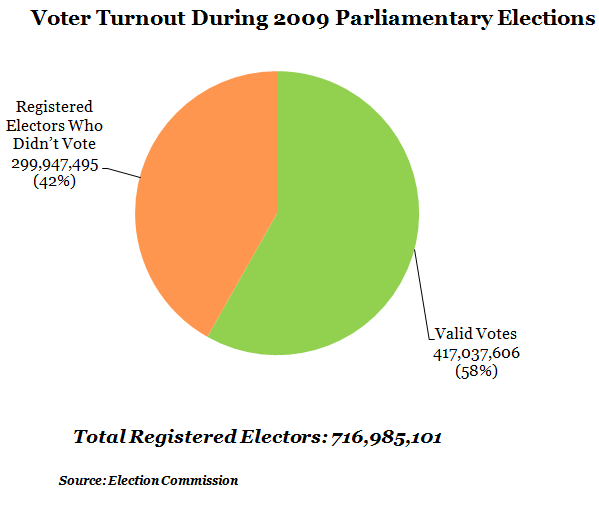
Democracy is synonymous with people’s participation. Lower participation of the population implies that lesser voices are represented. High voter turnouts are not necessarily a panacea for all problems either. Else, Jefferson wouldn’t have said what he did.
Glossary:
Economist Intelligence Unit (EIU): is an independent research division within The Economist Group. Other than the Democracy Index, EIU also invented the Quality of Life Index.
Gallup: is a US based company that specialises in opinion surveys. Gallup Poll is a wing of Gallup that conducts these surveys



